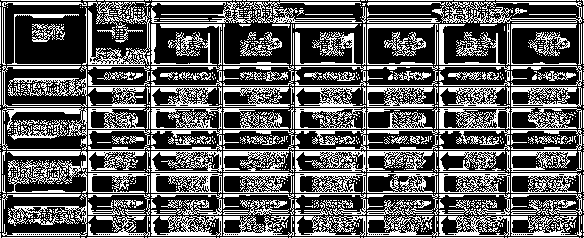Herbicide for controlling resistant weeds in wheat field
A technology for herbicides and wheat fields, applied in the direction of herbicides, algicides, biocides, biocides, etc., can solve the problem of lack of synergistic effect with tembotrione, occasional occurrence of herbicide damage, and herbicide prevention Unsatisfactory effect and other problems, to achieve the effect of ideal control effect, significant control effect, and easy to use technology
- Summary
- Abstract
- Description
- Claims
- Application Information
AI Technical Summary
Problems solved by technology
Method used
Image
Examples
Embodiment 1
[0022] Preparation Example 1: 18% tembotrione suspension concentrate
[0023] Put 180 grams of tembotrione, 55 grams of alkylphenol polyoxyethylene ether phosphate, and 42 grams of polystyrene phenol polyoxyethylene ether phosphate into the mixing kettle, stir and mix evenly, pass through the colloid mill, and then enter the sand Mill sanding, then add 200 grams of 1% xanthan gum solution, 14 grams of sodium benzoate, 30 grams of ethylene glycol, 479 grams of deionized water, and stir evenly in a shearing machine to obtain 18% tembotrione suspension .
Embodiment 2
[0024] Formulation example 2: 25% tembotrione dispersible oil suspension
[0025] Pump 570 grams of methyl oleate into the container, add 100 grams of nonylphenol polyoxyethyl ether, 30 grams of fatty alcohol polyoxyethylene ether, and 40 grams of calcium dodecylbenzenesulfonate into the container, and then stir Add 250 grams of tembotrione and 10 grams of organic bentonite. Then high-speed shearing for 30 minutes to mix the material evenly. Turn on the circulating water to control the sand mill below 40 degrees, and the material is sand-milled until the fineness passes through a 325-mesh sieve to obtain 25% tembotrione dispersible oil suspension concentrate.
Embodiment 3
[0026] Formulation example 3: 66% tembotrione wettable powder
[0027] Put 660 grams of tembotrione, 30 grams of white carbon black, 230 grams of calcined kaolin, 30 grams of sodium lauryl sulfate, and 50 grams of naphthalenesulfonate formaldehyde condensate into the conical mixer, and mix the materials for 30 minutes. Evenly, it was pulverized to 325 mesh by a jet mill, and then mixed in a gravity-free mixer for 30 minutes to obtain 66% tembotrione wettable powder.
[0028] Anti-effect example
[0029] When herbicides are actually applied in the field, they are affected by factors such as the environment and application techniques. The inventors prepared corresponding samples according to the above preparation examples. Weeds GB / T17980.41-2000" designed field control effect and safety test to clarify the field control effect and safety of the herbicidal composition of the present invention to wheat crops. The specific test operation is as follows:
PUM
 Login to View More
Login to View More Abstract
Description
Claims
Application Information
 Login to View More
Login to View More - R&D
- Intellectual Property
- Life Sciences
- Materials
- Tech Scout
- Unparalleled Data Quality
- Higher Quality Content
- 60% Fewer Hallucinations
Browse by: Latest US Patents, China's latest patents, Technical Efficacy Thesaurus, Application Domain, Technology Topic, Popular Technical Reports.
© 2025 PatSnap. All rights reserved.Legal|Privacy policy|Modern Slavery Act Transparency Statement|Sitemap|About US| Contact US: help@patsnap.com



